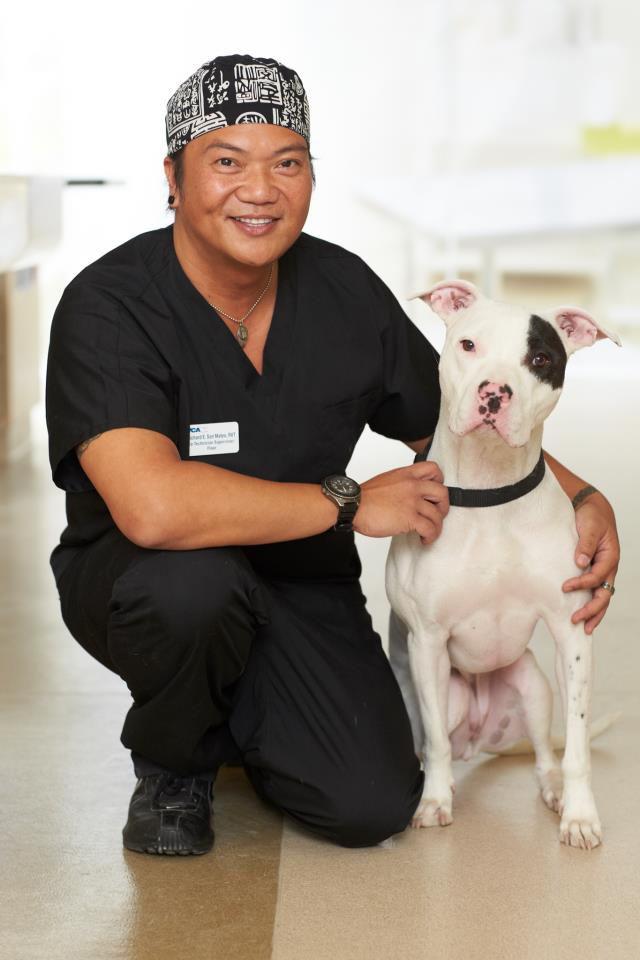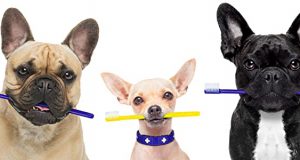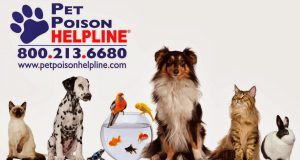February is National Pet Dental Month, and the veterinarians of VCA West Los Angeles share their tips, facts, and advice for caring for your pet’s dental health. Oral care is critical for your pet’s overall health and happiness, so here are 10 tips to maintain proper care:
 1. Pets have a remarkable ability to hide dental pain; their desire to eat far outweighs pain they may have in their mouths and thus, we can’t easily tell if they have a toothache or pain from an abscess. -J.J. Rawlison, DVM
1. Pets have a remarkable ability to hide dental pain; their desire to eat far outweighs pain they may have in their mouths and thus, we can’t easily tell if they have a toothache or pain from an abscess. -J.J. Rawlison, DVM
2. Brush your pet’s teeth as often as possible and use an oral rinse to rub on gums. Additionally, get your pet’s teeth examined professionally every six to 12 months. -Robert Rizzitano, DVM
3. Oral cancers are one of the most common forms of cancer that can occur in cats and dogs. Regular veterinary oral exams and proper dental care can catch cancer early and potentially allow for a cure or at the very least an opportunity to treat the disease. -J.J. Rawlison, DVM
4. Dental disease in some situations can lead to life threatening infections of the pet’s blood and heart. Maintaining proper dental health is critical for older pets and pets with concurrent diseases that may alter their immune defenses. -Johnny Chretin, DVM, DACVIM (Oncology)
5. Small and toy breed dogs, especially those fed a soft food diet exclusively, are at increased risk for dental disease and should have their teeth examined more frequently. -Jason W. Rabe, DVM
6. Severe periodontal disease can lead to an infection that is severe enough to weaken the jawbone, causing it to break, which can be very painful and difficult to treat. -J.J. Rawlison, DVM
7. Dogs have 42 teeth and cats have 30, while humans have 28 (without wisdom teeth). So, that’s 14 more teeth for dogs and two more teeth for cats that can develop problems. -J.J. Rawlison, DVM
8. Monitor your pet’s breath; bad breath typically means there is a dental health issue. -Robert Rizzitano, DVM
9. Use the “kneecap rule” when deciding what is safe to feed dogs in terms of chew toys. If you wouldn’t want someone to hit you in the kneecap with it, it is not safe for your pet’s teeth. -J.J. Rawlison, DVM
10. A full dental cleaning under anesthesia is the only way to thoroughly clean each tooth above and below the gum line, evaluate the pet for periodontal disease, and polish the teeth after the cleaning. Non-aesthetic dentals, while less expensive and free from the risk of anesthesia, are less effective and carry their own risks with a conscious and mobile dog, especially when carried out by non-veterinarian professionals. -Jason W. Rabe, DVM
Spread the word! Follow VCA West Los Angeles on Twitter: http://www.twitter.com/VCA_WestLA (@VCA_WLA) or Like it on Facebook: www.facebook.com/VCAWestLosAngeles for hospital updates, insider info, and helpful pet ownership tips.
 Dog Living A lifestyle magazine for dog lovers
Dog Living A lifestyle magazine for dog lovers




